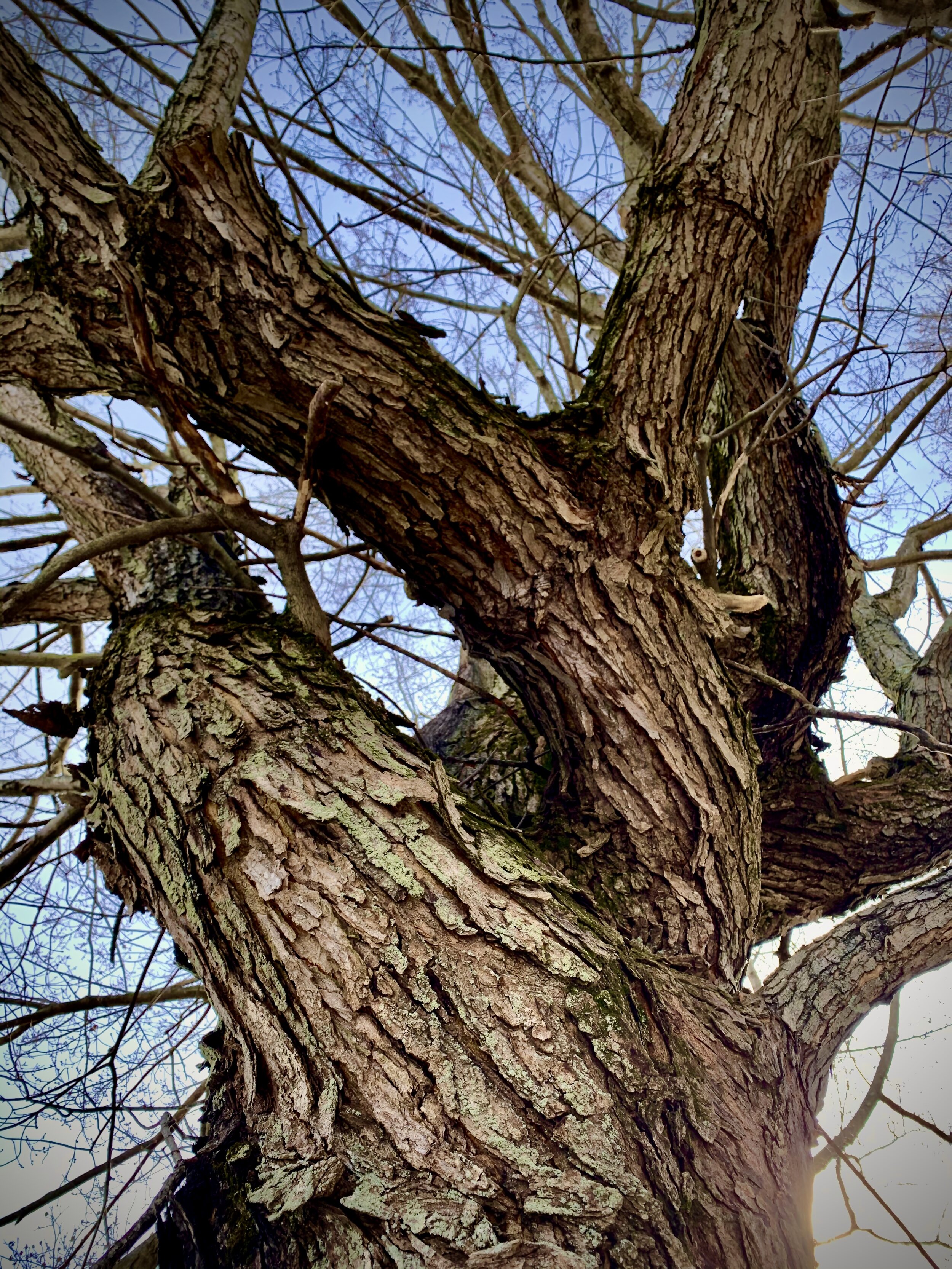Trees
They say only an optimist plants a tree.
Four years ago, my husband, Johnny Appleseed, got a wild hair and decided to plant not one, but 150 fruit trees at our farm. Or rather, he hired a nice Mennonite family to plant them. We knew exactly nothing about fruit trees, but there they stand, dotting a hillside in mid-Ohio. We planted 25 peach trees, 25 cherry trees and 10 each of 10 varieties of apples. Two peach trees made it through the first winter, six cherry trees. But so far, all of those apple trees are hanging in there.
For the past four years, I occasionally drive our four-wheeler by the orchard and give all the trees a pep talk: “You’re doing great! Keep up the good work!” It must be working, because this past month, for the first time in four years, we have apples. They’re not pretty, but there they are, hanging like imperfect jewels from the leafy branches. Honestly, it’s thrilling to behold. I’ll have to keep up the pep talks. And start looking up apple recipes.
While I am learning about fruit trees, I have always admired trees in general. After all, I am from Northeast Ohio, known as The Forest City for all the trees in this area. Every morning as I journal, I observe the trees out my window or on my porch, swaying, shimmering, tickling the air with their leaves. On the farm, our porch juts out right next to an enormous poplar tree, giving the room the feel of a treehouse. One of my favorite sounds in the world is the sound of a breeze through the leaves of that tree.
My real home is in a little town, about 20 minutes west of Cleveland, that is home to thousands of gigantic oak trees, one of which stands proudly in my back yard. This tree is probably 300 years old. I gaze up at her, towering above all the other trees around us and wonder what she has lived through. I imagine her as she grew up in a thick forest, full of native American tribes running past her, hunting and fishing on the southern shores of Lake Erie. She saw the white Europeans move in, pushing the natives out, claiming the land as their own. She saw species of animals that are now extinct or no longer thrive in this area: bears, wolves, large cats. She has seen the American Revolution and the Civil War pass by her branches and as she grew taller, and eventually shaded generations of families under her branches.
As she pushed her roots down, down, down into the clay earth and stretched herself up, up, up to the sky, eagles soared above her canopy. They vanished from this area for a while, the water being tainted with toxic DDT, but then returned when that practice stopped and now she sees them again, soaring, gliding up and down the great Lake Erie shoreline.
She saw farmers move in, divide up the land beneath her and plant orchards around her base. Our neighborhood used to be an orchard. She stood tall, like a sentry, peaking over the trees around her to catch a glimpse of the mighty lake to the north, the sun rising over it every morning to the east, setting over it to the west in the summer. To the south, she could see the rolling hills of forested land, pushed in front of the glaciers before they receded and left the Great Lakes in their wake.
Our oak saw the city folk march westward, out of the dense, dirty city core during the Industrial Revolution, escaping to the fresh, breezy shoreline to relax, spread out, dip their toes in the water. The people built summer get-away cottages along the lakeshore and eventually permanent homes beneath her boughs. White colonial style homes, brimming with post World War II families, spread out around her with kickballs, firefly hunts and backyard grilling smoke wisping up into her ever-expanding limbs.
If I were to be a tree, what would I be?
I remember the time when an Amish family came to build a shed in our back yard and, upon finishing, ended up standing around our tree, arms akimbo, craning their necks upward to admire her now expansive 200-foot height. Straight, true, magnificent. They even measured her base, some 30 feet around. The father removed his hat, brushed the dirt off it and shook his head, “That’s a mighty fine tree you’ve got there. If she ever gets sick, I would sell your house, because it’s going to be a fortune to take her down.”
If I were to be a tree, what would I be? While I adore our massive oak, I gotta say, those brown leaves in the autumn are drab, unimpressive. I’d rather be a radiant maple with bright red leaves, pulsing with sexy, tasty syrup. Or perhaps a dramatic weeping willow with my hair flung over my eyes like a gothic princess. Or maybe an aspen, with shimmering, dancing leaves. Back on the farm, walking amongst all those apple trees, I remember the book The Giving Tree by Shel Silverstein – and realize that, as a mother, I’m an apple tree. “Come Boy, come climb up my trunk and swing from my branches and be happy.” Not sexy or dramatic, but it fits.
I look across the orchard, at the bejeweled trees. It’s odd to think about someone, maybe a grandchild, a great grandchild or a complete future stranger, looking out over these trees in fifty years, wondering, “Who planted these trees here? Why? What was their life like way back then ... wasn’t that during the pandemic of 2020?” Perhaps then one will turn to the other and say, “You know, they say only an optimist plants a tree.”


